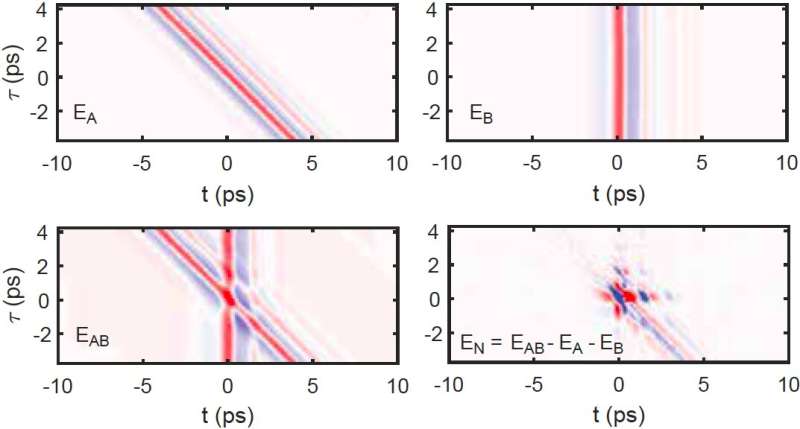February 1, 2021 feature
The first observation of a marginal Fermi glass

For several years, the condensed-matter physics community has been trying to gain a better understanding of material systems made up of strongly interacting particles. Interestingly, many metals can be described as systems with effectively weakly interacting electrons, even if interactions between electrons are typically quite strong.
Electrons have a charge and when they interact with other electrons, they mutually affect each other. Nonetheless, for a variety of reasons, in metals these interactions merely change specific parameters (e.g., the electron effective mass), but do not affect the underlying structure of the system, which acts as if it still contains free electrons (i.e., electrons that are not attached to atoms or molecules and can thus respond to external forces). This observation was theoretically framed in the context of what is known as the "Landau Fermi liquid theory."
Researchers at University of Illinois, Johns Hopkins University, CUNY College of Staten Island and University of Colorado Boulder have recently used a new technique they developed to investigate the possibility that a strongly disordered and highly correlated and disordered electron system (i.e., phosphorus-doped silicon) could be mapped to a system of non-interacting and localized excitations. Their experiments ultimately led to the observation of a unique phenomenon that they dubbed marginal Fermi glass.
These researchers' study also builds on the work of Phil Anderson, who won the Nobel prize in 1977 after having shown that waves could not propagate in systems with sufficiently strong randomness. This generic wave phenomenon, now known as Anderson localization, applies to many types of waves, including acoustic, electromagnetic and neutral matter waves.
In the past, some theorists have suggested that Anderson localization also applies to electronic waves (i.e., the waves within which electrons propagate, in the context of quantum mechanics). Nonetheless, the validity of this prediction has not yet been confirmed, particularly given that electrons interact with one another strongly due to their charge.
"Strongly interacting electron waves can certainly be localized by disorder, but whether they do it in a fashion consistent with Anderson localization is unclear," Peter Armitage, one of the researchers who carried out the study, told Phys.org. "Interactions are strong in an insulator, but the essential question is whether or not they are effectively irrelevant, as in many metals. Our work shows, for the first time, that they are not irrelevant."
Essentially, Armitage, Fahad Mahmood and their colleagues discovered the first experimental evidence suggesting that Anderson localization does not apply to electron waves. To conduct their experiments, they used a new technique they developed called THz 2-D coherent spectroscopy. This technique builds on recent advances in THz technology, which enabled the generation of very large THz range electric fields.
The large fields generated by new THz technologies allow scientists to collect measurements of THz optical nonlinearities. Using THz 2-D coherent spectroscopy, the researchers looked for the signature of interactions between electrons simply by seeking out the signature of effective interactions between the THz photons they used.
"When a physical system is excited some rate of that energy always leaves the system," Armitage explained. "Due to the fact that interactions are only weakly felt in most metals, in these materials, this rate is very small. However, using THz 2-D spectroscopy we found that in these materials the rate is not small, and is, in fact, proportional to the frequency used to excite the system."
The findings suggest that excitations in phosphorus-doped silicon and potentially in other similar systems cannot be considered 'weakly interacting." Just like with many metals, there is no evidence to back a non-interacting description. On the other hand, they found that there are interactions in these insulator systems, but that their strength is simply proportional to the frequency employed to excite them.
"The phenomenology we observed can be described with the term 'marginal Fermi liquid," a state that was proposed to exist in materials like the normal state of cuprate superconductors, the understanding of which still eludes us," Armitage said.
The recent study carried out by this team of researchers clearly shows that doped silicon should be described as an intrinsically strongly interacting system. In the future, this crucial finding could inspire other teams to carry out similar experiments, which could ultimately broaden the current understanding of other disordered electron systems, such as cuprate superconductors.
"We are now applying the same technique used in our study to other interesting quantum materials, such as quantum spin liquids, but we are also working on getting further information on the marginal Fermi glass," Armitage said. "With regards to the behavior we have found, there is also much to be understood theoretically. We hope that theorists will use sophisticated theoretical constructs to address this behavior."
More information: Observation of a marginal Fermi glass. Nature Physics(2021). DOI: 10.1038/s41567-020-01149-0.
Journal information: Nature Physics
© 2021 Science X Network




















